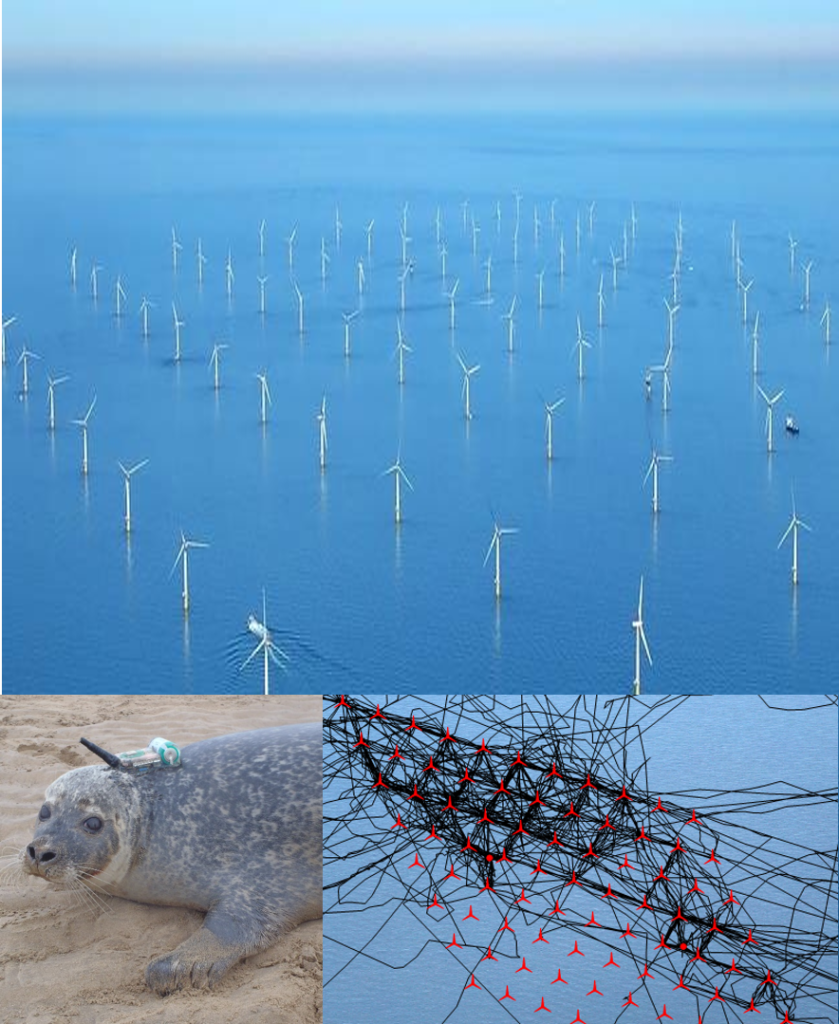Researchers:
- Dr Debbie Russell
- Dr Dave Thompson
- Dr Gordon Hastie
- Prof Vincent Janik
- Simon Moss
- Dr Bernie McConnell
Sea Mammal Research Unit (SMRU), School of Biology
There is rapid development of windfarms in offshore areas used by seals and other marine mammals. Construction of these windfarms is often achieved by driving the foundations of the turbine into the seabed, which is very noisy. This noise can impact seal hearing and can also cause displacement. However, once constructed, some individual seals appear to focus foraging efforts at the turbines. This is likely due to an “artificial reef effect”. Essentially, seaweed and sessile marine animals attach to the turbine foundations initiating the development of a community, including fish, around the turbines. The consequences of these reefs for the marine environment may be dependent on whether such reefs constitute an increase or just a concentration of prey. We need to resolve this uncertainty to assess whether such structures should be designed and managed to reduce or increase their ability to act as artificial reefs.

A tagged harbour seal – these tags transmit location data and are superglued onto the fur on the back of the neck (falling off during the annual moult of fur) (bottom left).
The track of a harbour seal (black) around Sheringham Shoal (turbine locations in red) (bottom right).
Photography and image production:
Sheringham Shoal windfarm – Mike Page
Tagged seal and tracks – Sea Mammal Research Unit